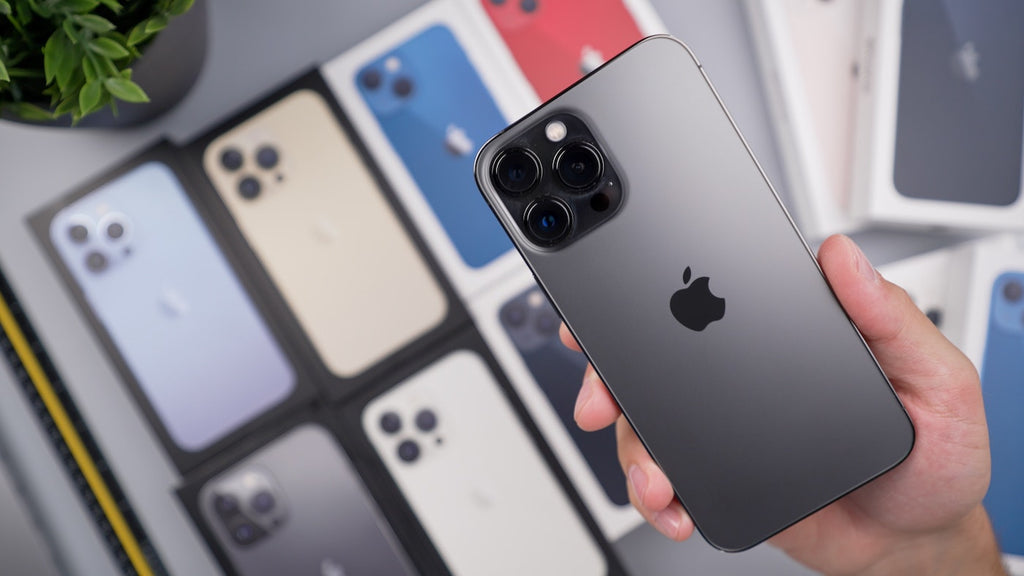Apple's global smartphone market share surges 20% YoY leaving competitors behind
02 May 2022
Despite the global technology sector facing constraints related to semiconductor shortages and uncertain economic prospects, Apple has made the most significant gains in the smartphone market share over the past year as competitors struggle to catch up. The tech giant’s growth seems to be a direct impact of the company's focus on innovative devices targeting different markets.
Data presented by Burga indicates that Apple's estimated global smartphone market share surged 20% between 2021 Q1 and 2022 Q1, from 15% to 18%. Apple's competitor, Samsung, has recorded the second-highest growth in market share at 9.09%. Despite Apple leading in market dominance growth, the company still trails Samsung, which controls an estimated 24% of the market as of 2022 Q1.
Elsewhere, other manufacturers led by Oppo and Vivo have both recorded a drop in market share by 20%. Xiaomi's share dropped 7.14%, while other manufacturers have seen their share plunge by 3.57%.
The manufacturer's market share represents sales in shipment estimates released in April 2022. Data on smartphone market share is provided by the technology market analyst firm Canalys.
Drivers of Apple’s market share growth
Apple's growth in market share is likely a direct impact of general factors like growing disposable income, development of telecom infrastructure, the emergence of budget-specific smartphones, and an increase in the number of new smartphone launches.
Amid Apple's growth, the smartphone space is still faced with challenges, including component shortages, price inflation and the overall economic uncertainty resulting from the pandemic recovery.
Interestingly, Apple is gaining ground in market share despite the company's smartphones mainly being considered expensive compared to competitors. It can be assumed that the devices are gaining more appeal with the company leveraging its loyal consumer base that is attracted by the devices' regular new features and the overall innovative designs.
However, Apple has significantly expanded its reach in recent years by exploring new opportunities like capitalizing on the growing used smartphones sector, especially across the emerging markets.
Despite trailing Samsung, Apple's growth in market share is a positive sign, with the company reaping from its strategy of diversifying the iPhone and iPad lineup.
Additionally, Apple continues to benefit significantly from specific markets like the United States, maintaining a lead by solid margins. The dominance in North America is from the increasing discretionary spending and introduction of 5G at lower price devices.
Furthermore, the iPhone 13 has led to Apple's resurgence in the Chinese market mainly due to relatively low prices. Besides the iPhone 13 series capturing the consumer demand, the iPhone SE is also standing out as a critical mid-range smartphone driving Apple's market share.
Samsung retains top spot despite slowed growth
Elsewhere, Samsung's strategies amid the economic uncertainty have helped the company retain its market dominance. For instance, the South Korean giant has managed to keep the process of its Galaxy premium phones unchanged despite the pressure for upward pricing. The move has catered to a broader audience.
One of the strategies adopted by the manufacturers is to focus on segmented parts of the market to remain competitive. In this line, Samsung has ramped up its production for the A series phone targeting the mid-to-low end markets.
However, Chinese manufacturers like Xiaomi, Oppo and Vivo continue to struggle despite expanding their distribution networks in key markets across the Middle East, Africa, Latin America and Europe. The companies aim to capitalize on the market share left behind by LG and Huawei.
Overall, the majority of the manufacturers recorded a decline in market share, mainly due to several supply and demand factors. The constraints have resulted in other secondary effects like increasing the average device replacement cycle that has become longer in markets like China. Notably, the delay in purchasing newly released smartphones is an emerging dilemma for most brands seeking to maintain their grip on the market.
Although most manufacturers have been hit with shortages like semiconductors, their strategies to adapt to the changes will influence their overall market share. However, some companies are moving to put in place mitigation measures like establishing semiconductor manufacturing facilities to minimize shortages.































































































































